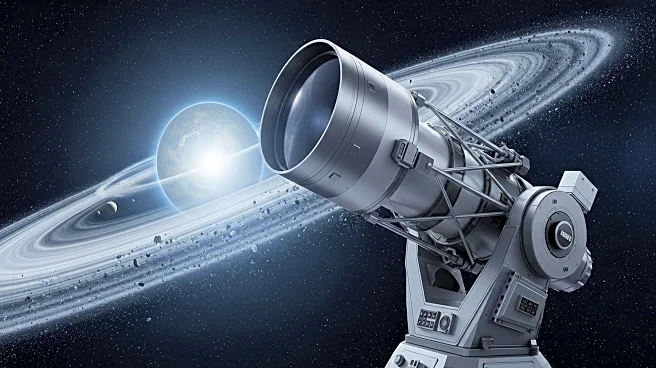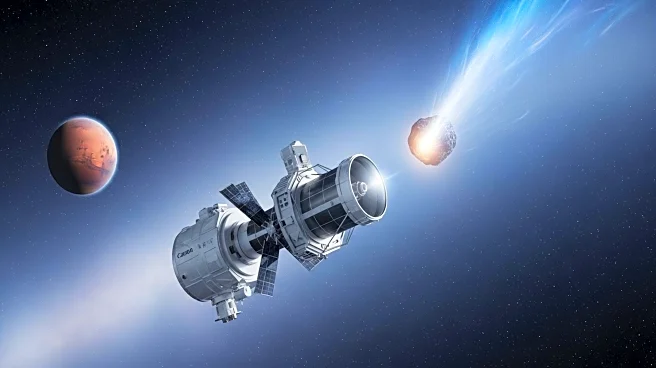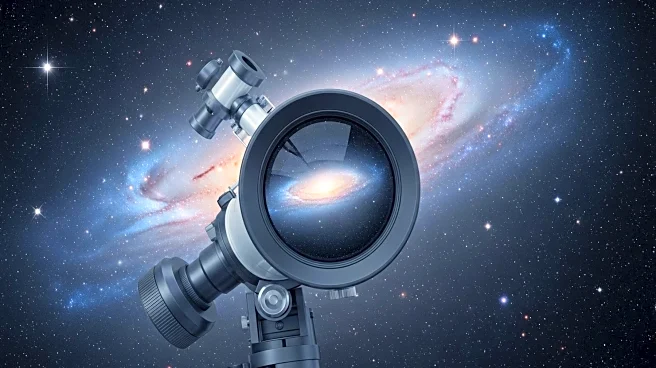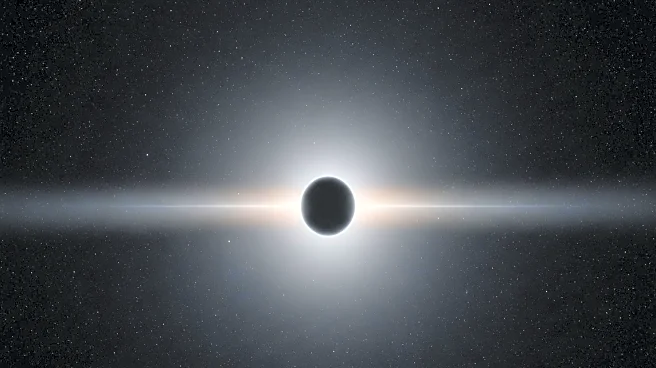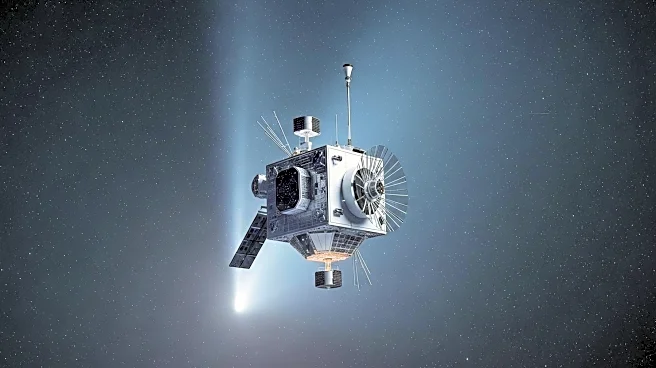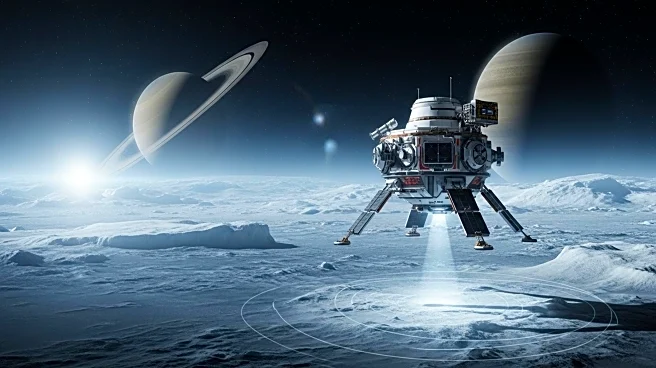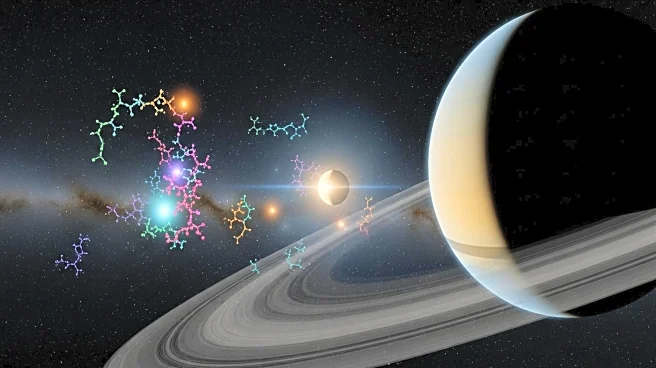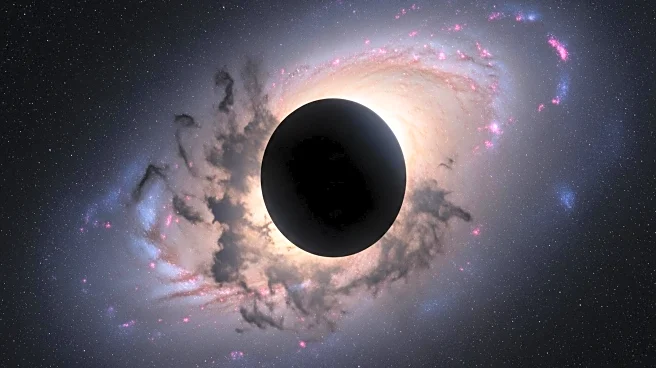What is the story about?
What's Happening?
NASA's James Webb Space Telescope has provided scientists with a groundbreaking view of a region around the exoplanet CT Cha b, located 625 light-years away, where moons could potentially form. The telescope's data revealed a carbon-rich disk encircling the planet, which NASA describes as a 'possible construction yard for moons.' This discovery is significant as it offers insights into the processes that may have led to the formation of moons in our solar system, such as Jupiter's Galilean moons. The study of this circumplanetary disk, which is distinct from the planet's host star's accretion disk, could enhance understanding of planet and moon formation both within our solar system and across the Milky Way galaxy.
Why It's Important?
The discovery of a potential moon-forming disk around CT Cha b is crucial for advancing the understanding of celestial formation processes. Moons are believed to outnumber planets and could potentially harbor life, making their study significant for astrobiology. The ability to observe such formations directly marks a new era in astronomical research, allowing scientists to witness the birth of moons and planets. This could lead to a deeper comprehension of the dynamics of planetary systems and the conditions that support life. The findings also underscore the capabilities of the James Webb Space Telescope, which continues to surpass its predecessor, the Hubble Space Telescope, in revealing the complexities of the universe.
What's Next?
Further studies are expected to focus on the chemical and physical properties of the circumplanetary disk around CT Cha b. Researchers aim to understand the disk's composition and its potential to form moons. The James Webb Space Telescope will continue to play a pivotal role in these observations, providing detailed data that could lead to new discoveries about exoplanetary systems. The ongoing research may also influence future missions and the development of technologies aimed at exploring distant celestial bodies.
Beyond the Headlines
The observation of moon formation processes around exoplanets could have profound implications for the search for extraterrestrial life. Understanding the conditions that lead to moon formation may help identify environments where life could exist. Additionally, the study of circumplanetary disks could inform theories about the early stages of our own solar system's development, offering a window into the past and the forces that shaped the planets and moons we observe today.
AI Generated Content
Do you find this article useful?
